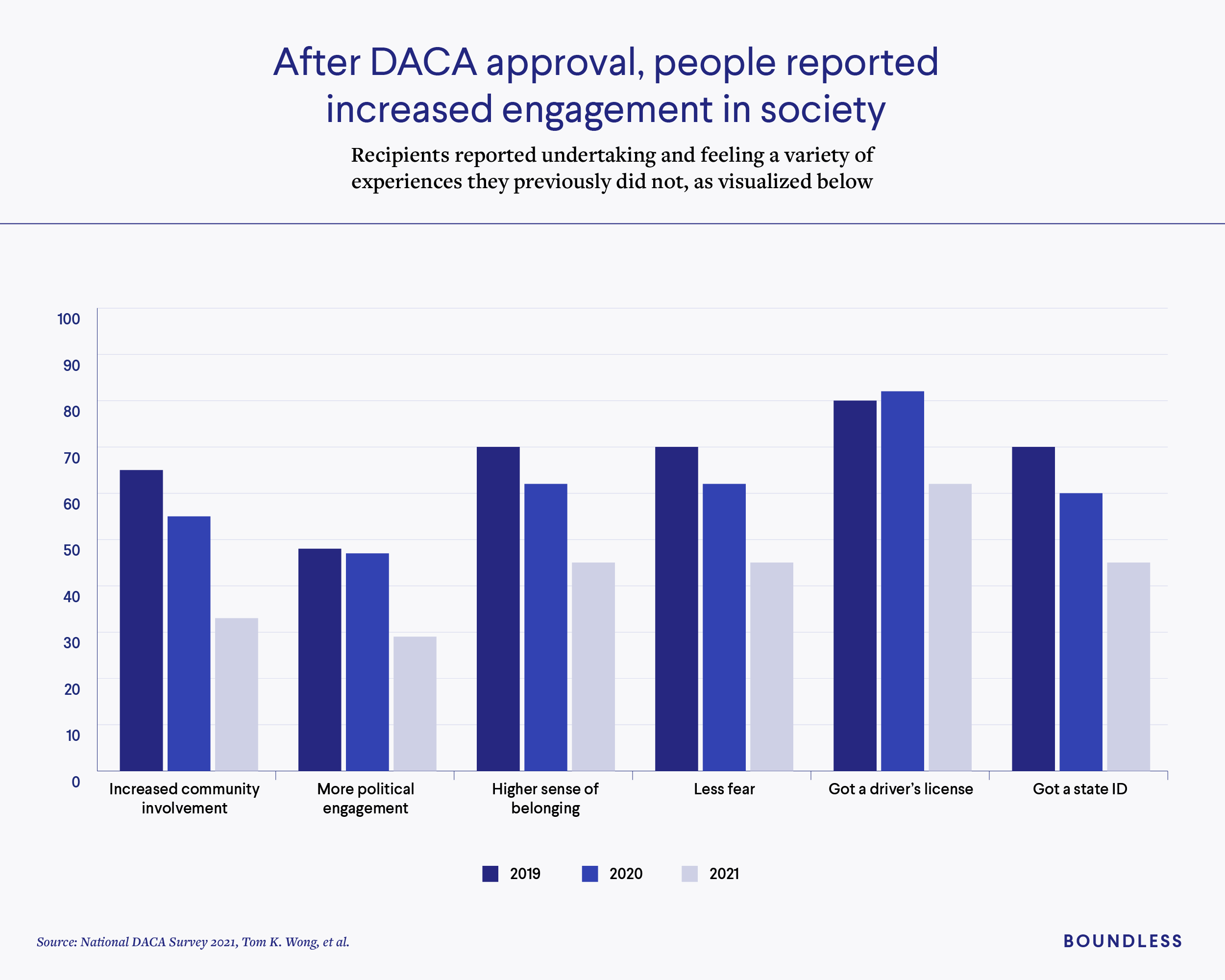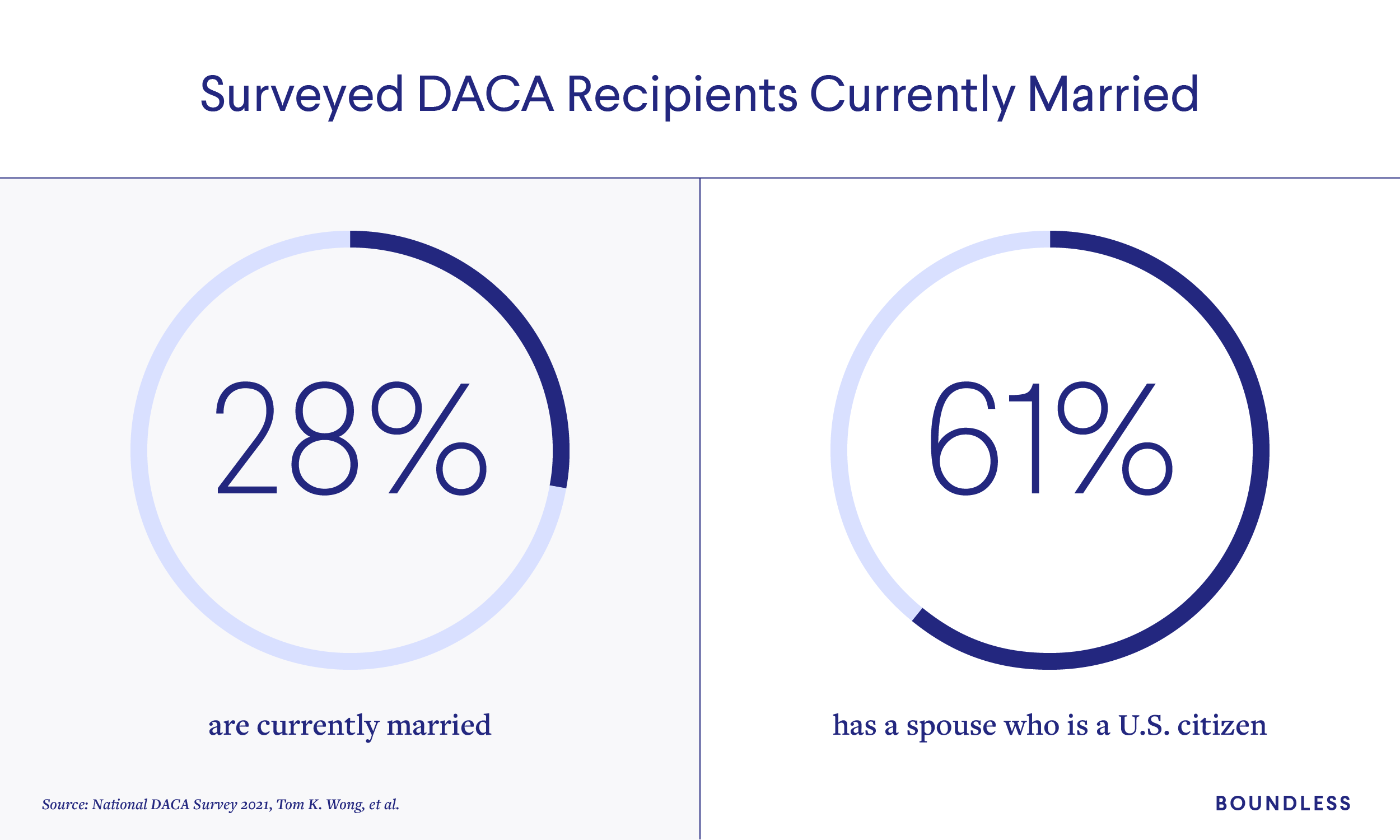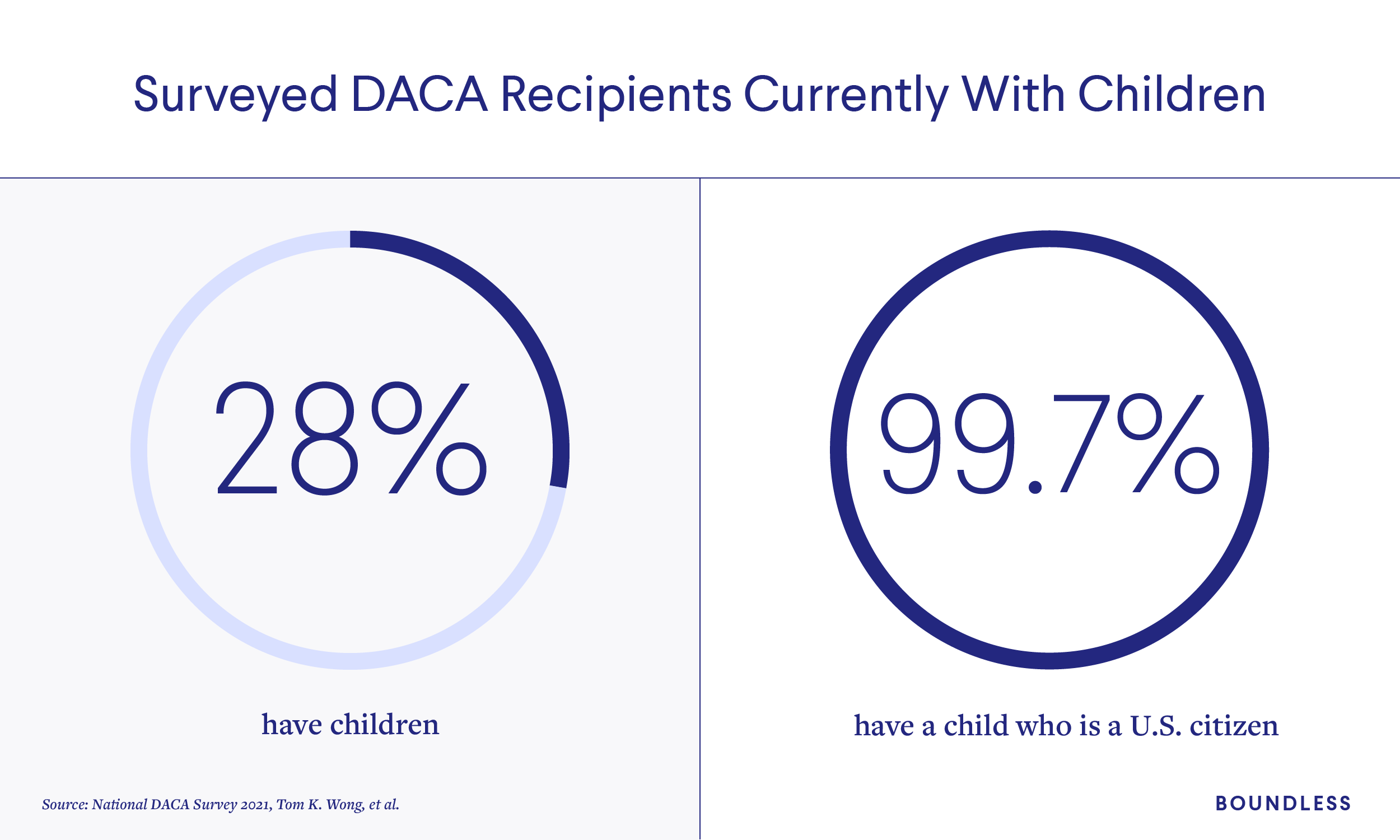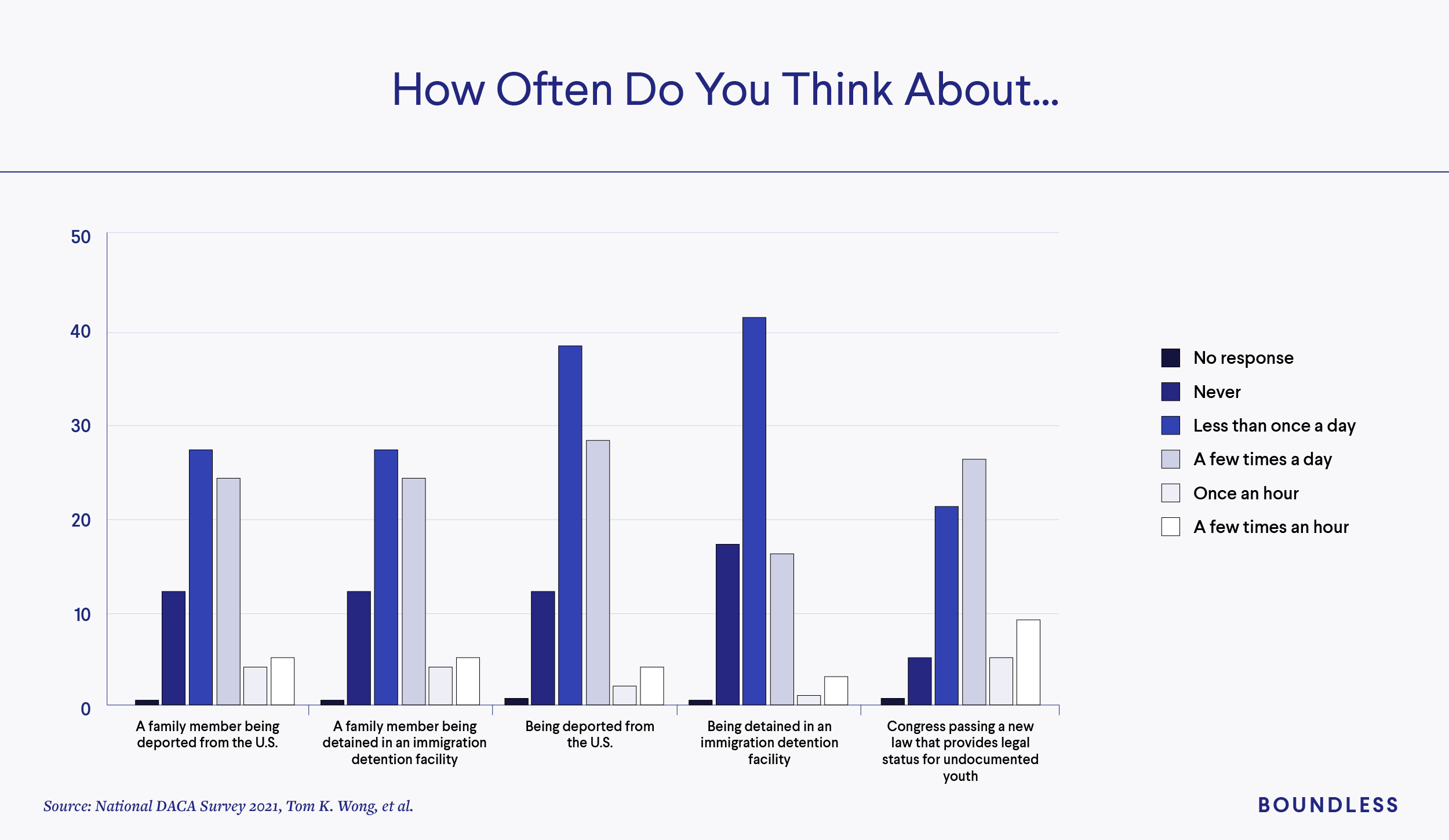Challenges and Opportunities Facing DACA Recipients
A report by Boundless looks at how DACA recipients have benefited from the Obama-era program, as well as the challenges they still face
Since its inception in June 2012, the Deferred Action for Childhood Arrivals (DACA) program has provided temporary relief from deportation as well as work authorization to undocumented young people across the United States.
Demographics of DACA recipients
As of December 2021, there were approximately 611,470 DACA recipients. More than half of them were female. The majority of DACA recipients are single, and two-thirds are between the ages of 20 and 30 years old.
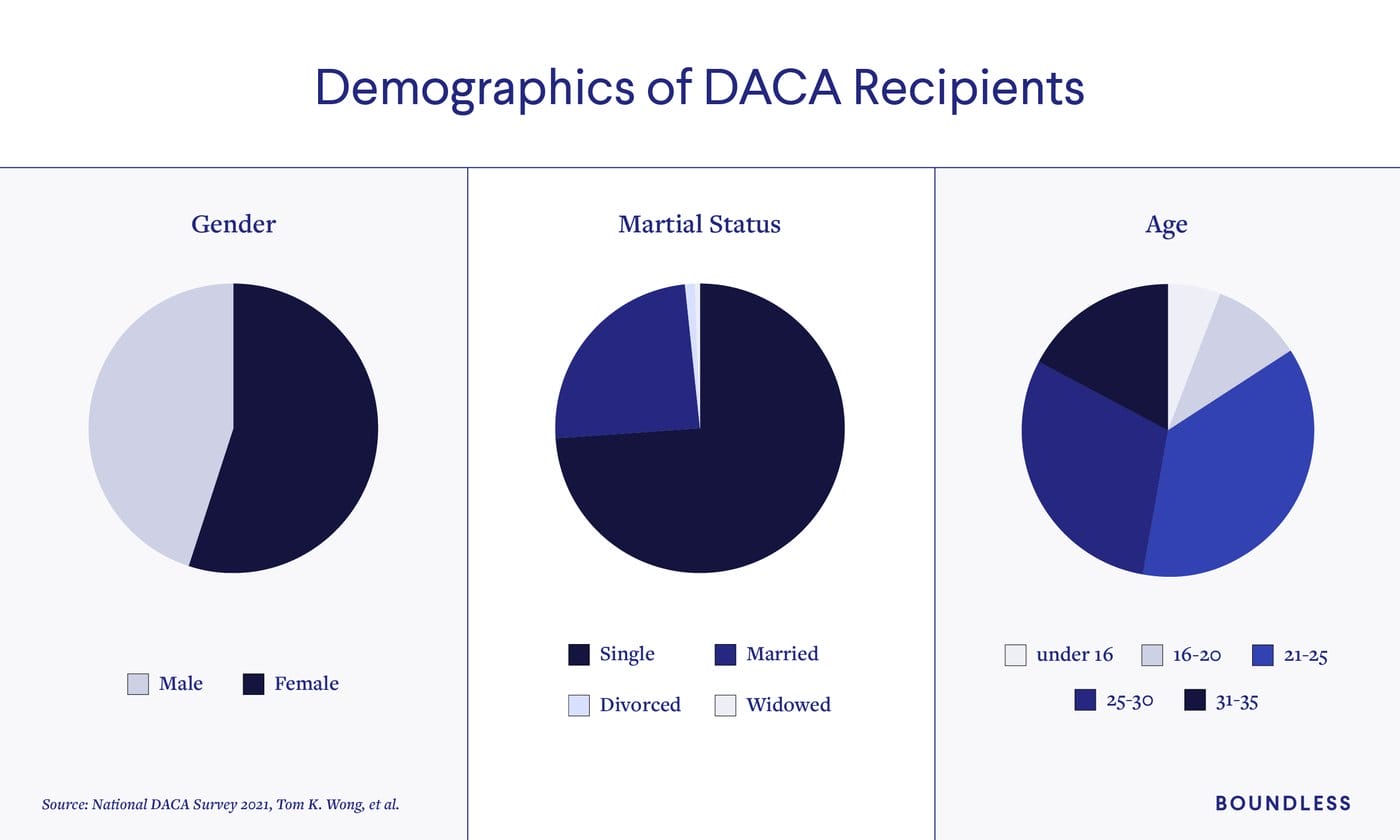
Nearly 500,000 – about 80% – of DACA recipients were born in Mexico, and most others in El Salvador, Guatemala and Honduras. In total, there were DACA recipients whose places of birth span approximately 139 countries. Almost half of all DACA recipients lived in California and Texas, followed by Illinois and New York.
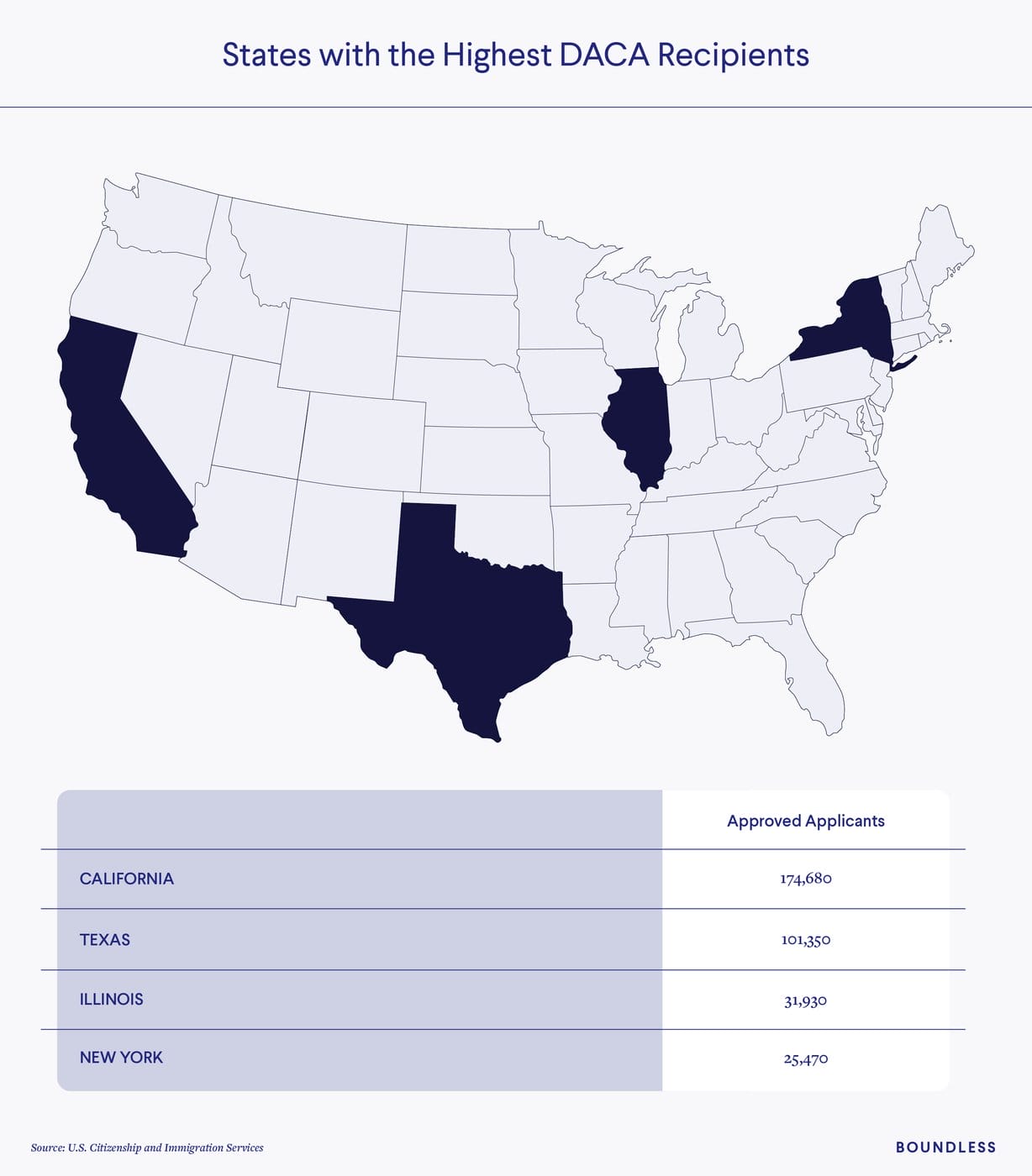
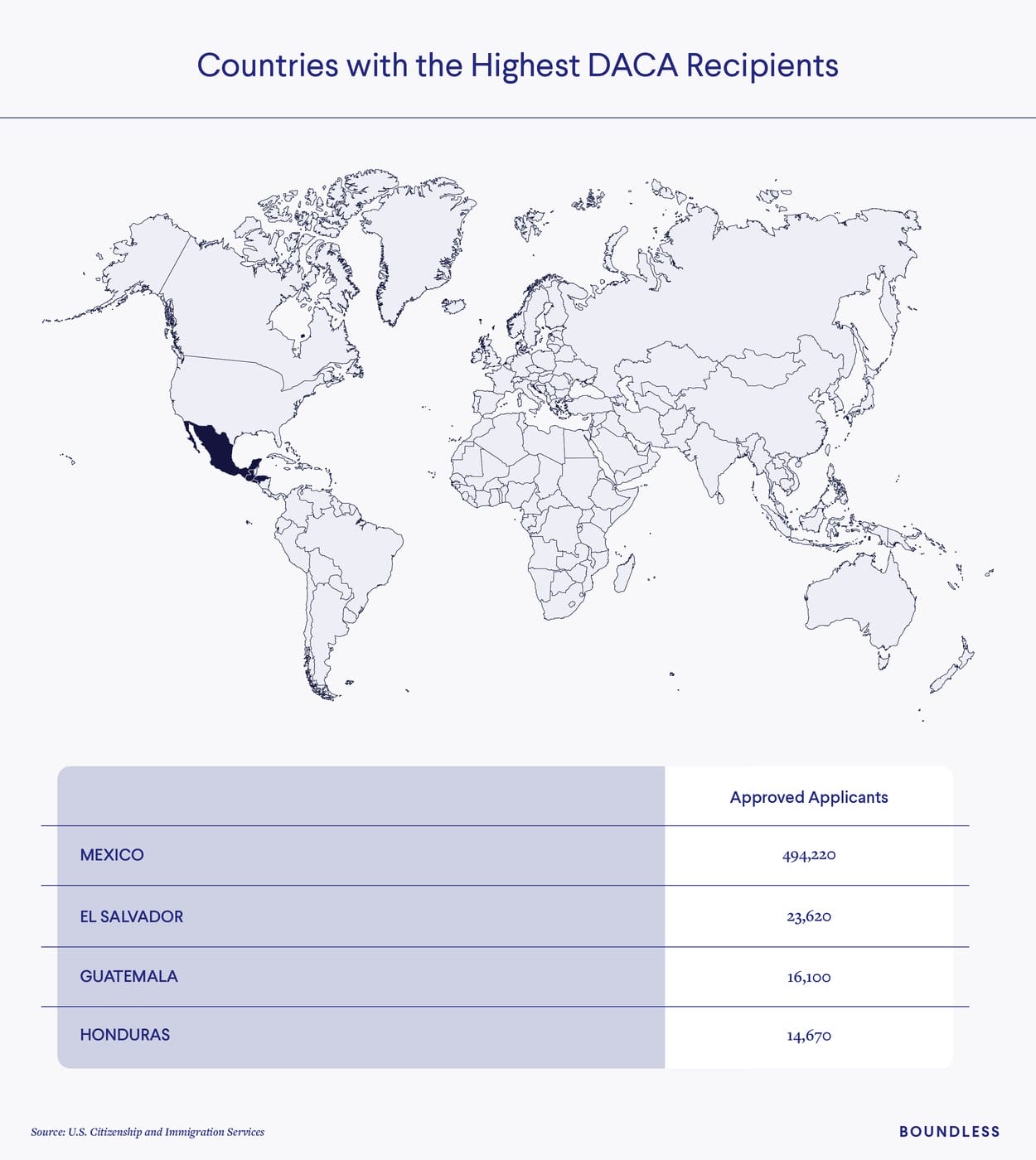
Results from the 2021 National DACA Study
The following data are results from a national study conducted for the sixth consecutive year by Tom K. Wong, an associate professor of political science and founding director of the United States Immigration Policy Center (USIPC) at UC San Diego.
The national study consisted of a questionnaire that was administered to an online panel of DACA recipients recruited by partner organizations. Several steps were taken to account for known biases that arise from online surveys such as multiple responses from the same person or responses from people that are not actually undocumented. To prevent these, recipients were not offered incentives for participation and the platform only allowed one response per IP address. Participants were also asked specific questions about their immigration history and DACA application at different moments in the questionnaire, worded differently each time. If their responses were consistent, they were considered real DACA recipients and included in the results. If not, their responses were excluded. The full results can be found here.
Demographics of surveyed DACA recipients
Of the 1,021 people surveyed, most lived in California, followed by Texas, New York and Florida respectively – mirroring the statistics of DACA recipients overall. More than 90% of surveyed participants identified their race/ethnicity as Hispanic or Latinx, with the average age being 28 years old currently and around 6 years old when they first came to the United States. More than three fourths of people identified as straight, with another 18% identifying as either gay, lesbian, or bisexual.
Economic Integration
Many economists have long maintained that DACA benefits the overall U.S. economy. DACA was also found to improve labor force participation and lower the unemployment rate among undocumented immigrants. Data from the 2021 National DACA Study shows that economic integration significantly improved upon DACA approval. Almost 80% of recipients reported being employed after their DACA application was approved, compared to less than half that number prior to it. DACA also doubled the average income of recipients, from about $11/hour before DACA to nearly $23/hour after, bringing the average annual income to approximately $50,000, on par with the median income of a U.S. household.
The access to financial stability and opportunity for higher income opened up a world of possibility for the surveyed DACA recipients. It led to an increase in their economic activity as well as allowed them to build a life aligned more closely with their personal and professional goals. For the majority of those surveyed, DACA allowed for financial independence and the ability to financially support their families. For some it meant being able to care for elderly family members or young children, pay for medical expenses or college tuition. For others it included getting relevant jobs that fit long-term career goals and provided health insurance. It also opened up access to better housing options, bank accounts, cars, and saving accounts.
In the 2020 survey, a section on civic engagement was included ahead of the Presidential election, which showed that the DACA program also increased recipients’ comfort with political participation. Of all the DACA recipients surveyed then, nearly half reported being more politically engaged, with more than 90% indicating they would vote or encourage friends and family to vote in the election. The same percentage of people reported supporting movements like Black Lives Matter.
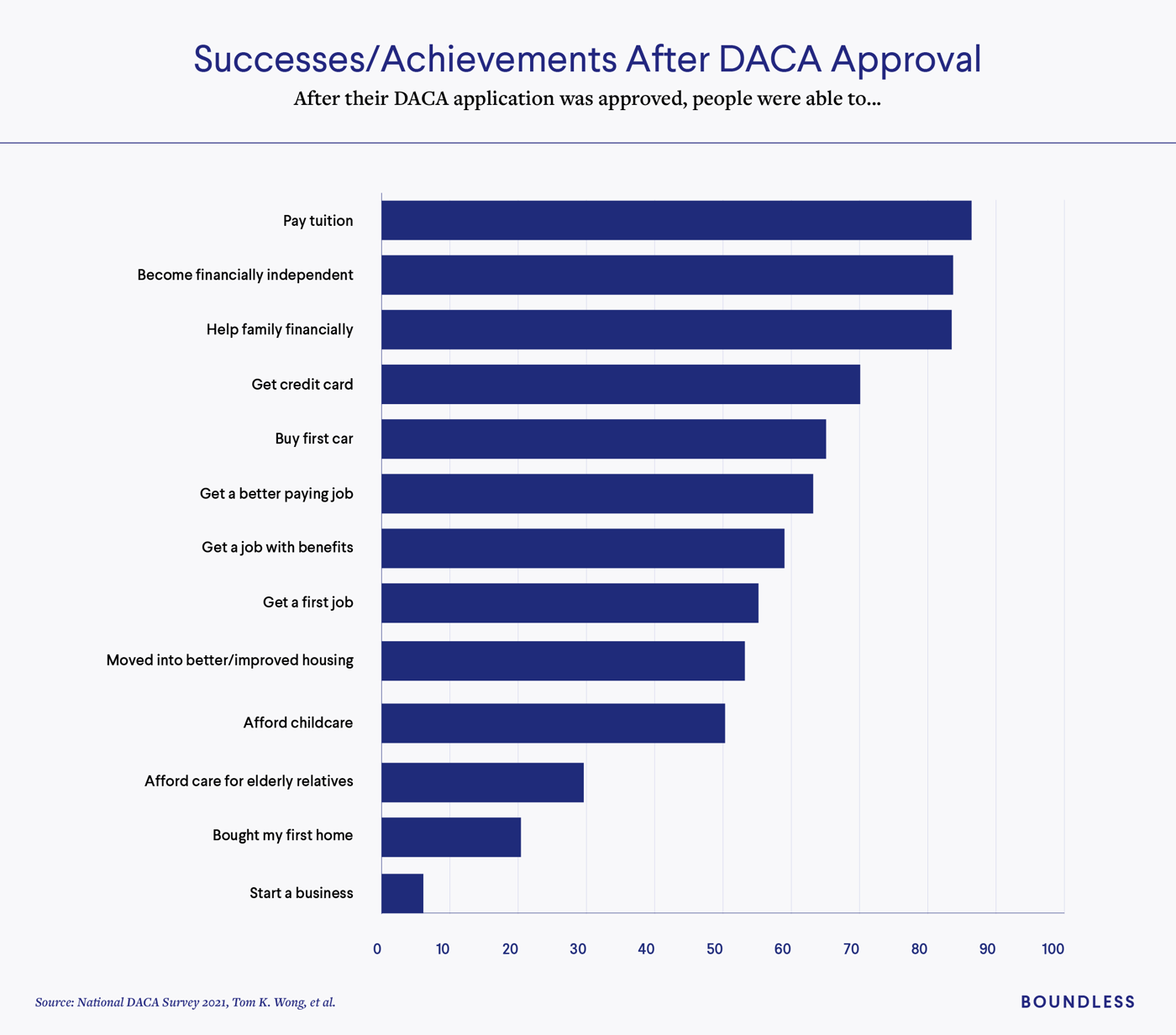
Inclusion and Belonging
No longer fearing deportation once their application is approved, DACA recipients are often more inclined to become engaged in their community. Of the 1,021 people surveyed, however, less than half reported feeling a stronger sense of belonging in the United States and reduced fear because of their immigration status. This percentage – 45% – is significantly lower than the 63% from 2020, indicating fewer feelings of assimilation and comfort even after DACA approval.
Low compared to previous years, after DACA application approval, in 2021:
- Nearly 29% of people became more politically active.
- 33% became more involved in their communities.
- About 62% of them got a driver’s license for the first time.
- Most recipients also establish strong families based here: almost 77% reported having an immediate family member (a parent, sibling, spouse, or child) who is a U.S. citizen. About a quarter of DACA recipients were married, of which more than half had spouses with U.S. citizenship. Almost all the children of DACA recipients were U.S. citizens.



Education
Among the many benefits of the DACA program is the increased access to educational opportunities. Once their DACA application was approved, more than half the surveyed DACA recipients pursued education opportunities that they previously were not able to, though this number was lower than in 2020.
About a third of those surveyed were currently in school, with the majority pursuing a bachelor’s degree and some an associate’s or master’s degree. Almost 70% had, or were on track to obtaining, a bachelor’s degree or higher at the time of the survey.

COVID-19
In 2020, the National DACA Survey included questions regarding the COVID-19 pandemic, which were not present in the 2021 update. The United States as well as many countries around the world struggled to cope with the massive human toll, economic loss, and chaos that characterized most of the first year of the pandemic. More than 200,000 DACA recipients were reported to be frontline workers, and of those surveyed last year, more than half were essential workers. Nearly half lost their jobs and a nearly third reported difficulty paying rent. Almost 250 surveyed participants said they were denied a stimulus check because they filed with an Individual Taxpayer Identification Number – a number usually given to certain nonresidents only.

Concerns About Immigration Enforcement
Over the course of its tumultuous existence, the DACA program has faced multiple threats and lawsuits from across the country. The Trump administration in 2017 planned to phase out DACA altogether, and though President Biden issued an executive order in early 2021 reinstating the program, it was voided by a federal judge later in the year. As it currently stands, DACA approvals prior to July 16, 2021, will continue to be valid but those filed after may not. On September 28, the DHS proposed regulations for DACA that follow President Biden’s directive to preserve the program consistent with U.S. law. Among other things, the proposed rule would maintain the eligibility criteria for DACA (as opposed to expanding them) and codifies definitions of what “deferred action” means to avoid ambiguity in implementation. The rule could lead to both positive and negative impacts for DACA, and is currently waiting to be passed.
As the DACA program’s existence continues to face uncertainty, there are heightened concerns among DACA recipients about their future and the possibility of stricter immigration enforcement. The survey asked the DACA recipients how often they thought about certain immigration-related outcomes, with answers ranging from a few times every hour to less than once a day.
More than a third of those surveyed thought about being detained or deported from the U.S. at least once a day. More than half feared detention or deportation of a family member on a daily basis, and a vast majority hoped every day for Congress to pass legislation that provides legal status for undocumented youth. These responses were consistently higher among those who had children, with a staggering 70% thinking about being separated from their kids about once a day or more.

Risks to DACA Recipients If Deported
Many undocumented immigrants to the U.S. – who may now be DACA recipients – undertake an arduous, often dangerous journey to get here. For most of them, conditions in their home countries were bad enough to propel them to make that decision – data from the study reflects this among most of the participants. Only 3.5% of people said their quality of life would be better in their countries of birth than in the US – meaning the vast majority believe they have better lives here. Similarly, less than a tenth of survey participants indicated their job prospects, education, and long-term career goals would be better met in their home countries than in the US.
Recent attempts to end the DACA program can pose imminent risks of deportation to the thousands of current DACA recipients, putting them back in the same situations they sought to escape. In addition to facing a poorer quality of life, DACA recipients, if deported, would face significant risks to their safety and wellbeing. Of the survey participants, nearly 80% reported that they would be concerned for their and their family’s physical safety, as well as the quality of healthcare, food security and – for about half – possible homelessness. Moreover, most current DACA recipients reported no longer having any immediate family in their countries of birth, suggesting that if they were to be deported, they would have virtually no support network or even nominal assistance upon arriving there.

About the Data
The following public sources were used:
- Tom Wong, et al., 2021 National DACA Survey, February 5, 2021
- U.S. Citizenship and Immigration Services, Count of Active DACA Recipients as of Dec 2021
- Department of Homeland Security, Notice of Proposed Rulemaking: Deferred Action for Childhood Arrivals, September 28, 2021
- CLINIC, Summary of Proposed DACA Regulations, September 30, 2021
- Pope. Nolan G., The Effects of DACAmentation: The Impact of Deferred Action for Childhood Arrivals on Unauthorized Immigrants, November 1, 2016
